Category Archives: Miscellaneous
This is a 100% Absolutely Fool-Proof, Never-Fail Method for Determining When Spaghetti and Other Pastas are Fully Cooked!
This post was first published in February of this year…
There is a 100% Absolutely Fool-Proof, Never-Fail method for determining when Spaghetti and other (Linguine, Fettuccine and other “long, solid”) pastas are fully cooked! This particularly pertains to dry pastas, rather than *”soft” Homemade noodles, although the following method can be used, to some degree, for any pasta.
First of all, don’t do this: “Some like to fling it up to the ceiling, onto the wall or [on] to the dog to see if it acutally sticks.” This is a fairly common Dumbism, the theory being: that if the pasta is done, it will stick. So will overdone pasta. I prefer my methodology.
As a strand of semolina/flour spaghetti – for instance – cooks, the outer (cooked) edge turns a creamy/golden color as the (uncooked) core (anima) retains a whitish hue. (If the pasta contains spinach or other ingredients the colors, of course, will be different. With some fresh pastas, the colors are inverted – just look for differences.)
Cooking the pasta: First bring the correct amount of water to a rolling boil. Find the suggested cooking time, which is usually listed on the package or box of noodles. This will give you an approximate idea of the total cooking time, so you won’t have to keep checking the pasta excessively.
When you get to within a few minutes of the suggested cooking time, remove a single strand of the pasta with a fork and cut it (or bite it) in half. Do this (several times if necessary) until: looking at the sliced edge, you see a whitish anima (core) about the size of a period [ . ] This is the state of the pasta at about one minute (more or less) before it is fully cooked; the pasta is cooked “Al Dente” at this point. Remove the pasta, if you want it cooked Al Dente or, give it a bit more time until the whitish anima completely dissappears – then the pasta is 100% cooked. Knowing the Al Dente point, you can adjust the pasta to preference, harder (Al Dente) or softer.
This LasVegasBuffetClub animated GIF shows how a piece of pasta changes color during the cooking process: the raw uncooked pasta starts off as pale white, then the outer edge starts to turn creamy/gold as it cooks – the anima remains whitish. At the Al Dente point, the anima is reduced to the size of a period [.] (GIF pictures are exagerated.) The whitish anima diminishes until disappearing, when the pasta is fully cooked.

Fresh pastas and pastas of other shapes can be similarly monitored, just look for “differences.”
*Some big, fat Homemade noodles may take 30-40 minutes to cook fully.
Who said: “I like fat spaghetti and skinny women?”
Cooking For Engineers is a “technical” Food Website…
View a WIKI page on pasta…
Visit the Recipe Pages of LasVegasBuffetClub.Com…
Visit the Home Page of LasVegasBuffetClub.Com…
[All text/Animated GIF belong to the LasVegasBuffetClub-Copyright © 2009 LasVegasBuffetClub.]
Mother’s Day May 10, 2009
The Moon will be 100% Full on May 8th, at 9:01 PM – Las Vegas Time.
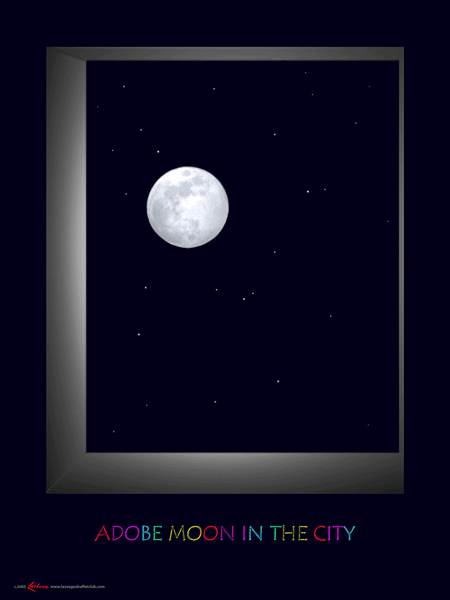
click to enlarge
The Moon will be 100% Full on May 8th, at 9:01 PM – Las Vegas Time.
The May 8th Moon Rises at 7:37 PM and Sets at 4:59 AM – Las Vegas time.
read more…
From Western Washington University:
“American Indians gave names to each of the full moons to keep track of the passing year. The names are associated with the entire month until the next full moon occurs. Since a lunar month averages 29 days, the dates of the moons change from year to year. Here are titles most closely associated with calendar months” read more…
OUT WEST!
The May Moon in the language of the Native Zuni, of Southwest, New Mexico is “yachun kwa’shi’amme” which translated, means: “no name.”
read more…
BACK EAST!
From the Old Farmer’s Almanac: “Historically the Native Americans who lived in the area that is now the northern and eastern United States kept track of the seasons by giving distinctive names to the recurring full Moons. Each full Moon name was applied to the entire month in which it occurred. These names, and some variations, were used by the Algonquin tribes from New England to Lake Superior.” read more…
“The full Moon name for this month is Full Flower Moon. Flowers spring forth in abundance this month. Some Algonquin tribes knew this full Moon as the Corn Planting Moon or the Milk Moon.” read more…
click the figure (below) to find information on a particular tribe’s moon names.
“Is the distance between Earth and the Moon increasing?” click here for the answer from The Old Farmer’s Almanac…
The Adobe Moon In The City graphic at the top of the page includes a generic full moon photograph which was shot from downtown Las Vegas in the 90s. It was “Photoshopped” into the “frame.” The poster is available for purchase.
EARTH DAY 2009
EASTER – Sunday April 12, 2009!
Easter Eggs

“Easter [] is an important annual religious feast in the Christian liturgical year.[1] According to Christian scripture, Jesus was resurrected from the dead three days[2] after his crucifixion. Many Christian denominations celebrate this resurrection on Easter Day or Easter Sunday[3] (also Resurrection Day or Resurrection Sunday), two days after Good Friday. The chronology of his death and resurrection is variously interpreted to be between A.D. 26 and 36.”
“Easter also refers to the season of the church year called Eastertide or the Easter Season. Traditionally the Easter Season lasted for the forty days from Easter Day until Ascension Day but now officially lasts for the fifty days until Pentecost. The first week of the Easter Season is known as Easter Week or the Octave of Easter. Easter also marks the end of Lent, a season of prayer and penance.”
“Easter is a moveable feast, meaning it is not fixed in relation to the civil calendar. Easter falls at some point between late March and late April each year (early April to early May in Eastern Christianity), following the cycle of the Moon. After several centuries of disagreement, all churches accepted the computation of the Alexandrian Church (now the Coptic Church) that Easter is the first Sunday after the Paschal Full Moon, which is the first moon whose 14th day (the ecclesiastic “full moon”) is on or after March 21 (the ecclesiastic “vernal equinox”)” read more from WIKI…
All about Easter from the History.com…

“The Easter Bunny is very similar in trait to its Christmas holiday counterpart, Santa Claus, as they both bring gifts to good children on the night before their respective holiday. Its origin is disputed but the character was mentioned as early as 1600; some trace it to alleged pre-Christian fertility lore,[1] others to the role of the hare in Christian iconography”
“The Easter Bunny is a mythical character depicted as an anthropomorphic rabbit. In legend, the creature brings baskets filled with colored eggs, candy and toys to the homes of children on the night before Easter. The Easter Bunny will either put the baskets in a designated place or hide them somewhere in the house for the children to find when they wake up in the morning” read more from WIKI…
April’s FULL MOON Will Be 100% Full – April 9, 2009 at 7:55 A.M. – Las Vegas Time.
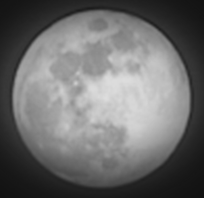
“Historically the Native Americans who lived in the area that is now the northern and eastern United States kept track of the seasons by giving distinctive names to the recurring full Moons. Each full Moon name was applied to the entire month in which it occurred. These names, and some variations, were used by the Algonquin tribes from New England to Lake Superior” read more from The Old Farmers Almanac…
“The full Moon name for this month is Full Pink Moon. This full Moon heralded the appearance of the grass pink, or wild ground phlox—one of the first spring flowers. It is also known as the Sprouting Grass Moon, the Egg Moon, and the Fish Moon” read more from The Old Farmers Almanac…
The full Pink Moon will be full Thursday April 9, 2009 at 7:55 A.M. Las Vegas time…
The Shoshone (Nevada) name for the April Full Moon is “badua’-mea'” meaning “Melting,” according to WWU.EDU read more…
American Indian Moons (Moon Names – 29 tribes) “American Indians gave names to each of the full moons to keep track of the passing year. The names are associated with the entire month until the next full moon occurs. Since a lunar month averages 29 days, the dates of the moons change from year to year. Here are titles most closely associated with calendar months” read more from the Western Washington University Website…
Visit the main pages of the LasVegasBuffetClub…
Or…Click the Website link above, on your right…
FREE ROOM-FREE AIRFARE-FREE FOOD + WE’LL GIVE YOU A $1000.00 BONUS
.
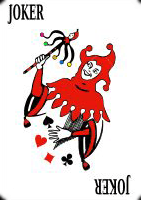
FREE ROOM-FREE AIRFARE-FREE FOOD + WE’LL GIVE YOU A $1000.00 BONUS!
All you have to do is read the following paragraph and follow the instructions, if any…
April Fools’ Day or All Fools’ Day, although not a holiday in its own right, is a notable day celebrated in many countries on April 1. The day is marked by the commission of hoaxes and other practical jokes of varying sophistication on friends, family members, enemies, and neighbours, or sending them on fool’s errand, the aim of which is to embarrass the gullible. Traditionally, in some countries, the jokes only last until noon: like UK, Australia, New Zealand, Canada and South Africa, someone who plays a trick after noon is called an “April Fool”.[1] Elsewhere, such as in Ireland, France, and the USA, the jokes last all day read more from Wikipedia…
APRIL FOOL…………………….
“Spring Has Sprung! The Grass Has Riz! I Wonder Where The Flowers Is?”
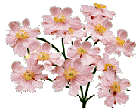
“Spring Has Sprung! The Grass Has Riz! I Wonder Where The Flowers Is?” That great comedian/gourmand: Jughead, of Archie Comic Book fame, “said” that a long time ago on paper.
Appropriate for the First Day of Spring, that old dormant “poem” springs up again with a new life.
Connect with the Official Archie Comic’s Website…
“Definition of Spring”
“Spring is one of the four temperate seasons. Spring marks the transition from winter into summer.”
“According to the astronomical definition, spring begins on the Vernal Equinox (usually March 21 in the Northern Hemisphere, and September 22 in the Southern Hemisphere), and lasts until the summer solstice (usually June 21 in the Northern Hemisphere and December 21 in the Southern Hemisphere). In 2009, Spring fell on March 20th in the Northern Hemisphere. According to this definition, therefore, the day called Midsummer’s Day in some traditions is the first day of Summer. Meteorologists generally define the beginning of spring as March 21 in the Northern Hemisphere and September 21 in the Southern Hemisphere.” read more from Wikipedia…
“Vernal Equinox 2009: Facts on the First Day of Spring” John Roach for National Geographic News Updated March 19, 2009.
“In the Northern Hemisphere spring officially begins at 7:44 a.m. ET on Friday, March 20, 2009—the vernal equinox, or spring equinox [ (see vernal equinox pictures). ]
“But don’t be fooled by the old rumor that on the vernal equinox the length of day is exactly equal to the length of night.” read more from NationalGeographic.Com
Happy first day of Spring to YOU!
Access the main pages of The LasVegasBuffetClub…
Things Are Looking Up: Another Full Moon On March 10, 2009
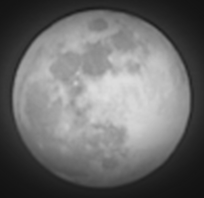
Our Moon will be 100% full March 10, 2009
Rise 5:33 P.M. Set 6:02 A.M. – Las Vegas Time
“Historically the Native Americans who lived in the area that is now the northern and eastern United States kept track of the seasons by giving distinctive names to the recurring full Moons. Each full Moon name was applied to the entire month in which it occurred. These names, and some variations, were used by the Algonquin tribes from New England to Lake Superior.”
“The Full Worm Moon”
“At the time of this spring Moon, the ground begins to soften and earthworm casts reappear, inviting the return of robins. This is also known as the Sap Moon, as it marks the time when maple sap begins to flow and the annual tapping of maple trees begins” more from The Old Farmer’s Almanac…
The Old Farmer’s Almanac’s Moon Phase Calendar…
The Old Farmers Almanac…
LasVegasBuffetClub’s Moon Page…
LasVegasBuffetClub’s Home Page…
[FYI – The Full Moon image is not from this month. This photo was shot from the Main Street Station’s RV Park a decade ago.]



